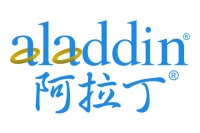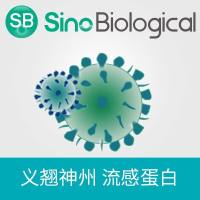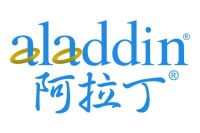2 Dimensional Gel Electrophoretic Analysis for Chicken Egg
互联网
Overview This protocol is a detail description of the procedure in performing 2D gel electrophoresis for illustrating the protein profile of the whole chicken egg.
A similar protocol was presented by C.Desert, C.Gue''in-Dubiard, F.Nau, G.Jan, F.Val,and J. Mallard in J. Agric. Food Chem. 2001, 49, 4553-4561 titled "Comparison of Different Electrophoretic Separations of Hen Egg White Proteins." in which only albumen of the hen egg was illustrated.
Material 1. The whole egg contents of the chicken egg
2. IPG strip
3. Buffer solutions:
Lysis buffer: 50 �l
9.5 M urea + 0.0038 g DTT + 40 mM Tris base + 2% NP-40
IPG buffer: 5 �l
Sample buffer: ? �l
8.3 M urea + 2 M thiourea + 4% NP-40 + 1 mg/L bromophenol blue
The amount of sample buffer = 300 �l - 0.6 �l (protein sample) - 50 �l (lysis buffer) - 5 �l IPG buffer = 244.4 �l
4. Mineral oil
5. IEF unit(Amersham Pharmacia Biotech)
6. Equilibration buffer:
Tris (pH: 8.8; 50 mM): 0.335 ml
Urea: 3.604 g
Glycerol: 3.15 ml
SDS: 0.2 g
Bromophenol blue (tiny amount)
� Make up to 10 ml with distilled H2O
7. 100 mg DTT (Dithiothreitol)
8. 250 mg IAA (Iodoacetamide)
9. Polyacrylamide gel:
Distilled water: 24.7 ml
30% acrylamide: 22.1 ml
1.5 M Tris (pH: 8.8): 16.9 ml
10% SDS: 0.65 ml
10% ammonium persulfate: 0.65 ml
TEMED: 0.026 ml
10. 0.5% agarose gel
11. Protein marker (Amersham Pharmacia Biotech)
12. The vertical SDS-PAGE unit(Amersham Pharmacia Biotech)
13. The glass staining basin
14. The fixation solution:
100 ml Ethanol
25 ml Acetic acid glacial
� Make up to 250 ml with distilled H2O
15. The sensitizing solution:
75 ml Ethanol
1.25 ml Glutardialdehyde (25% w/v)
10 ml Sodium thiosulphate (5% w/v)
17 g Sodium acetate
� Make up to 250 ml with distilled H2O
16. Distilled water
17. The developing solution:
6.25 g Sodium carbonate
0.05 ml Formaldehyde (37% w/v)
� Make up to 250 ml with distilled H2O
18. The stopping solution:
3.65 g EDTA-Na2�2 H2O
� Make up to 250 with distilled H2O
Procedure 1. The whole egg contents of the chicken egg is sonicated for 5 minutes.
Purpose: To breakdown the membranous structure of the organelles inside the egg so that proteins are freely released.
2. Estimation of protein concentration by spectrophotometry i.e. checking OD595
Mix the followings:
200�l of BSA (Protein Assay Solution)
20�l sample of chicken egg after diluting 10X
798 �l H2O
Blank solution:
200�l of BSA (Protein Assay Solution)
800�l H2O
3. Volume of protein sample recruited:
The amount of protein sample required for silver stain is 300�g
0.5 mg x 10 (dilution) / 1 ml = 300�g / ? �l
Therefore, 0.6 �l of the sample is recruited in terms of its volume
4. Add buffer solutions to the sample.
Buffer solutions
Lysis buffer: 50 �l
9.5 M urea + 0.0038 g DTT + 40 mM Tris base + 2% NP-40
IPG buffer: 5 �l
Sample buffer: ? �l
8.3 M urea + 2 M thiourea + 4% NP-40 + 1 mg/L bromophenol blue
The amount of sample buffer = 300 �l - 0.6 �l (protein sample) - 50 �l (lysis buffer) - 5 �l IPG buffer = 244.4 �l
5. Weigh 38 mg DTT and place it in the eppendof tube.
6. Mix the sample and DTT first, and then add the buffer solutions.
7. Load this mixture to the strip tray.
8. Place the IPG (immobilized pH gradient) strip into the reswelling tray with gel-surface facing downward.
Duration: 12 hours
Purpose: Re-hydrating the dry IPG strip
Cover the strip with 1 ml mineral oil to prevent evaporation & urea crystallization
9. Add wicks soaked with buffer solution on both electrodes to minimize the interfering effects of salts in the solution.
10. Cover the reswelling tray with its lid.
11. Harvest the rehydrated IPG strip.
12. Rinse the IPG strip to remove the mineral oil.
13. Place the IPG strip into the other strip tray ditches with the gel-surfaces face upward.
14. Add wicks soaked with buffer solution on both the positive and negative electrodes.
15. Seal the liquid surface with a layer of mineral oil to minimize evaporation.
16. Cover the IEF tray with the lid.
17. Run IEF:
Step 1: 500 volts, 1 hour
Step 2: 1000 volts, 1 hour
Step 3: 8000 volts, 4 hours
18. Harvest the IPG strip after IEF for 6 hours.
19. Rinse the IPG strip to remove the mineral oil.
20. Equilibration
1st Equilibration: (Soak the IPG strip in 5 ml of this equilibration solution for 30 minutes with shaking)
10 ml SDS equilibration buffer + 100 mg DTT (Dithiothreitol)
2nd Equilibration: (Soak the IPG strip in 5 ml of this equilibration solution for 30 minutes with shaking)
10 ml SDS equilibration buffer + 250 mg IAA (Iodoacetamide)
Equilibration buffer:
Tris (pH: 8.8; 50 mM): 0.335 ml
Urea: 3.604 g
Glycerol: 3.15 ml
SDS: 0.2 g
Bromophenol blue (tiny amount)
� Make up to 10 ml with distilled H2O
20. Meanwhile prepare the polyacrylamide gel:
Distilled water: 24.7 ml
30% acrylamide: 22.1 ml
1.5 M Tris (pH: 8.8): 16.9 ml
10% SDS: 0.65 ml
10% ammonium persulfate: 0.65 ml
TEMED: 0.026 ml
21. Add running buffer on the top edge of the polyacrylamide gel
22. After equilibration, the IPG strip is placed horizontally on the polyacrylamide gel
23. Cover the top edge with 0.5% agarose gel, and create a marker well on the gel
24. Load protein marker into the marker well.
25. Place the polyacrylamide gel set into the vertical SDS-PAGE tank.
26. Fill it with sufficient running buffer.
27. Cover the lid of the vertical SDS-PAGE tank.
28. Switch on the power supply.
Running conditions of 2D PAGE
Current: 40 mA/gel
Voltage: 100 volts
Temperature: 8 -12�C (keep the system cool inside the refrigerator)
Duration: 6 hours
29. Harvest the polyacrylamide gel.
30. Place it into the staining basin.
31. The silver staining procedure:
Fixation
Sensitizing
Washing
Silver reaction
Washing
Developing
Stopping
32. Fixation
100 ml Ethanol
25 ml Acetic acid glacial
� Make up to 250 ml with distilled H2O
Action time: 30 minutes
33. Sensitizing
75 ml Ethanol
1.25 ml Glutardialdehyde (25% w/v)
10 ml Sodium thiosulphate (5% w/v)
17 g Sodium acetate
� Make up to 250 ml with distilled H2O
Action time: 30 minutes
34. Washing
Distilled water
3 times
Each for 5 minutes
35. Silver reaction
25 ml Silver nitrate solution (2.5% w/v)
0.1 ml Formaldehyde (37% w/v)
Action time: 20 minutes
36. Washing
Distilled water
2 times
Each for 1 minute
37. Developing
6.25 g Sodium carbonate
0.05 ml Formaldehyde (37% w/v)
� Make up to 250 ml with distilled H2O
Stir vigorously to dissolve sodium carbonate
Action time: 2 � 5 minutes
38. Stopping
3.65 g EDTA-Na2�2 H2O
� Make up to 250 with distilled H2O
Action time: 10 minutes
39. Scan and file the results.
40. Identify the proteins, if any, by means of specific software.
Troubleshooting 1. Make sure the rehydration tray is placed horizontally.
2. Bubble-formation should be avoided when loading the strip into the tray.
3. The IPG strip should be stored under -20�, and should not be exposed to room temperature longer that 10 minutes.
4. Make sure there is no leakage of water from the vertical glass plates before loading polyacrylamide gel solution.








